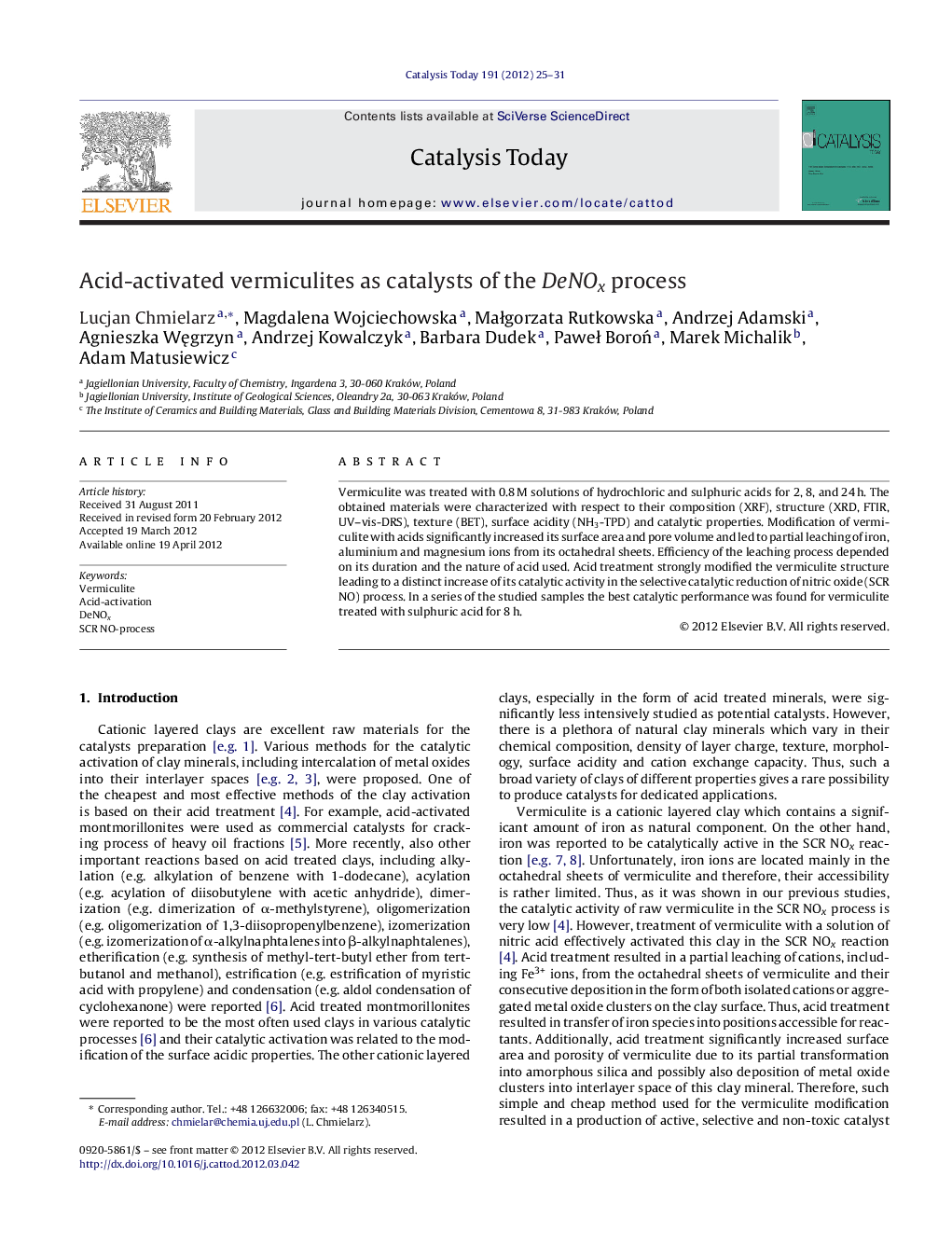| Article ID | Journal | Published Year | Pages | File Type |
|---|---|---|---|---|
| 55272 | Catalysis Today | 2012 | 7 Pages |
Vermiculite was treated with 0.8 M solutions of hydrochloric and sulphuric acids for 2, 8, and 24 h. The obtained materials were characterized with respect to their composition (XRF), structure (XRD, FTIR, UV–vis-DRS), texture (BET), surface acidity (NH3-TPD) and catalytic properties. Modification of vermiculite with acids significantly increased its surface area and pore volume and led to partial leaching of iron, aluminium and magnesium ions from its octahedral sheets. Efficiency of the leaching process depended on its duration and the nature of acid used. Acid treatment strongly modified the vermiculite structure leading to a distinct increase of its catalytic activity in the selective catalytic reduction of nitric oxide (SCR NO) process. In a series of the studied samples the best catalytic performance was found for vermiculite treated with sulphuric acid for 8 h.
Graphical abstractFigure optionsDownload full-size imageDownload high-quality image (83 K)Download as PowerPoint slideHighlights► Vermiculite treated with H2SO4 and HCl were tested as catalysts for DeNOx. ► Acid treatment significantly increased surface area and porosity of vermiculite. ► Acid treatment significantly activated vermiculite for the DeNOx process. ► Activation effect is related to the transfer of active components from the positions unavailable for reactants to clay surface.
